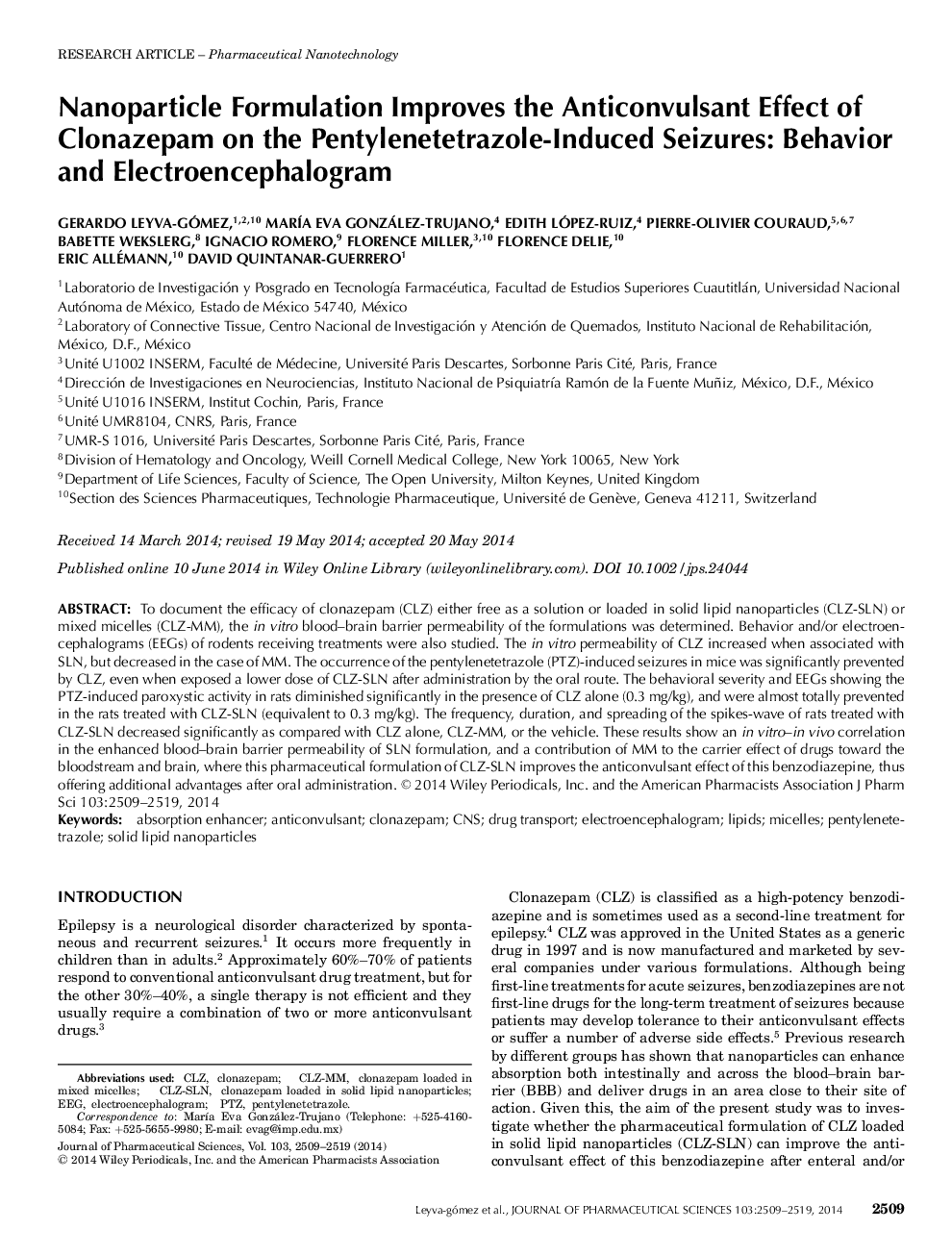| Article ID | Journal | Published Year | Pages | File Type |
|---|---|---|---|---|
| 10162329 | Journal of Pharmaceutical Sciences | 2014 | 11 Pages |
Abstract
To document the efficacy of clonazepam (CLZ) either free as a solution or loaded in solid lipid nanoparticles (CLZ-SLN) or mixed micelles (CLZ-MM), the in vitro blood-brain barrier permeability of the formulations was determined. Behavior and/or electroencephalograms (EEGs) of rodents receiving treatments were also studied. The in vitro permeability of CLZ increased when associated with SLN, but decreased in the case of MM. The occurrence of the pentylenetetrazole (PTZ)-induced seizures in mice was significantly prevented by CLZ, even when exposed a lower dose of CLZ-SLN after administration by the oral route. The behavioral severity and EEGs showing the PTZ-induced paroxystic activity in rats diminished significantly in the presence of CLZ alone (0.3 mg/kg), and were almost totally prevented in the rats treated with CLZ-SLN (equivalent to 0.3 mg/kg). The frequency, duration, and spreading of the spikes-wave of rats treated with CLZ-SLN decreased significantly as compared with CLZ alone, CLZ-MM, or the vehicle. These results show an in vitro-in vivo correlation in the enhanced blood-brain barrier permeability of SLN formulation, and a contribution of MM to the carrier effect of drugs toward the bloodstream and brain, where this pharmaceutical formulation of CLZ-SLN improves the anticonvulsant effect of this benzodiazepine, thus offering additional advantages after oral administration. © 2014 Wiley Periodicals, Inc. and the American Pharmacists Association J Pharm Sci 103:2509-2519, 2014
Keywords
Related Topics
Health Sciences
Pharmacology, Toxicology and Pharmaceutical Science
Drug Discovery
Authors
Gerardo Leyva-Gómez, MarÃa Eva González-Trujano, Edith López-Ruiz, Pierre-Olivier Couraud, Babette Wekslerg, Ignacio Romero, Florence Miller, Florence Delie, Eric Allémann, David Quintanar-Guerrero,
